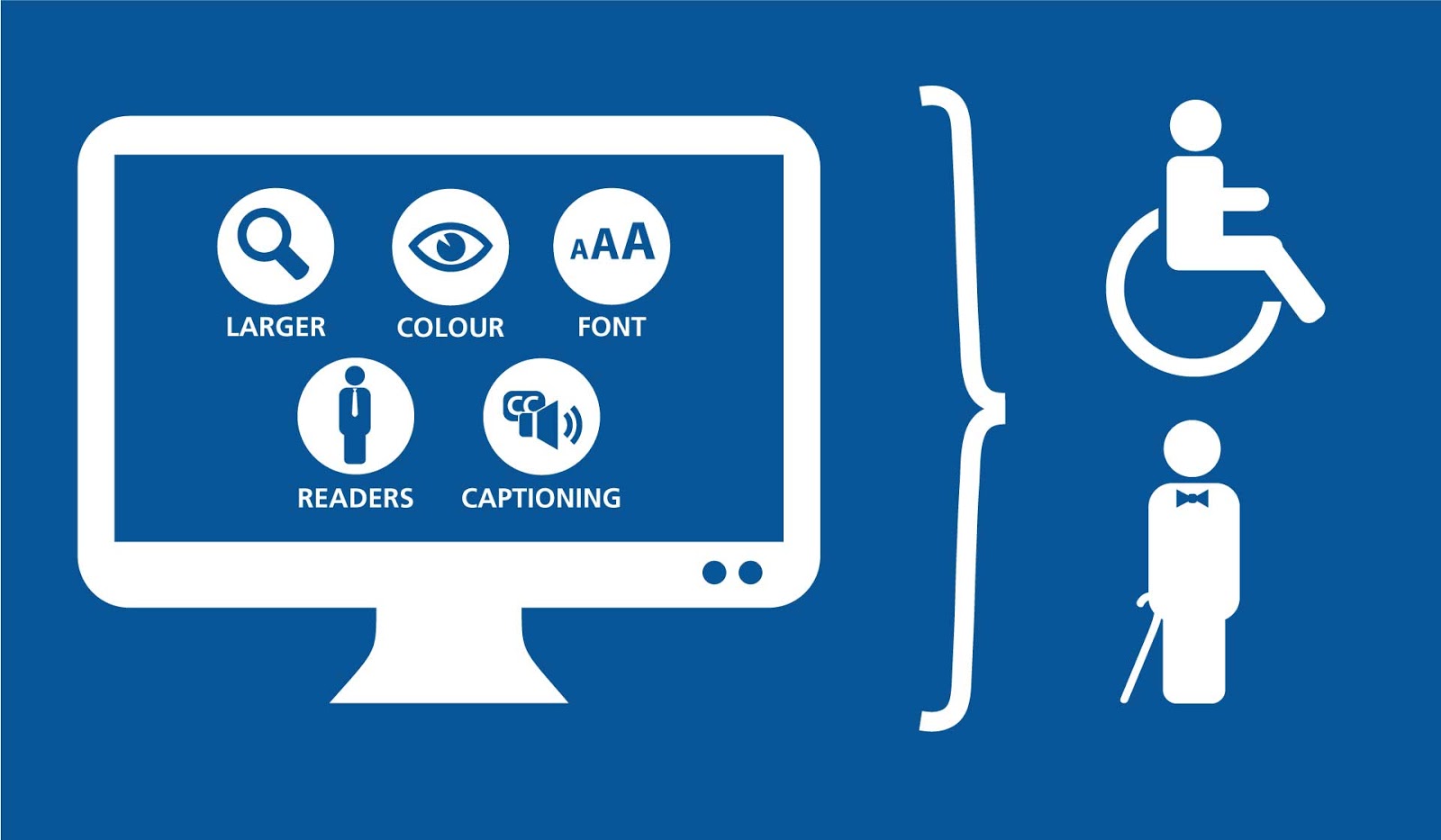Table Of Content

Using shades of colors is also effective in bar charts to show different genres or topics. In this accessible chart example, the box office sales have been arranged according to genre. For example, if you have a chart or diagram with complex data in your design, you might need to set a long alt text to ensure a reader understands the visual. This technology allows people who cannot read text to access and understand digital information. Venngage lets you set the right reading order in designs in a few clicks without having to leave the platform. To ensure a similar experience for people using keyboard navigation or screen readers, you’ll have to program this information in.
Get awesome design content in your inbox each week
Nothing in these requirements prevents the use of designs, products, or technologies as alternatives to those prescribed, provided they result in substantially equivalent or greater accessibility and usability. The 1991 Standards and the 2010 Standards apply to fixed or built-in elements of buildings, structures, site improvements, and pedestrian routes or vehicular ways located on a site. Unless specifically stated otherwise, advisory notes, appendix notes, and figures contained in the 1991 Standards and 2010 Standards explain or illustrate the requirements of the rule; they do not establish enforceable requirements. (1) The obligation to provide an accessible path of travel may not be evaded by performing a series of small alterations to the area served by a single path of travel if those alterations could have been performed as a single undertaking. (2) If existing elements, spaces, or common areas are altered, then each such altered element, space, or area shall comply with the applicable provisions of appendix A to this part.

Colors
Passenger loading zones shall provide access aisles complying with 503 adjacent to the vehicle pull-up space. Access aisles shall adjoin an accessible route and shall not overlap the vehicular way. The required “van accessible” designation is intended to be informative, not restrictive, in identifying those spaces that are better suited for van use. Enforcement of motor vehicle laws, including parking privileges, is a local matter. Parking spaces for vans and access aisles and vehicular routes serving them shall provide a vertical clearance of 98 inches (2490 mm) minimum.
Limited-Use / Limited-Application Elevators
At least one accessible route shall connect accessible buildings, accessible facilities, accessible elements, and accessible spaces that are on the same site. An accessible route shall not be required between site arrival points and the building or facility entrance if the only means of access between them is a vehicular way not providing pedestrian access. Operable parts on accessible elements, accessible routes, and in accessible rooms and spaces shall comply with 309. Raised diving boards and diving platforms shall not be required to comply with these requirements or to be on an accessible route.
The ADA Standards are based on minimum guidelines set by the Access Board. You will be taught by Frank Spillers, CEO of the award-winning UX firm Experience Dynamics, and will be able to leverage his experience from two decades of working with accessibility. Given that, you will be able to learn from, and avoid, the mistakes he’s come across, and apply the best practices he’s developed over time in order to truly make your accessibility efforts shine. Upon completing the course, you will have the skills required to adhere to accessibility guidelines while growing your awareness of accessibility, and ensuring your organization’s maturity grows alongside your own. The course includes interviews with an accessibility specialist and blind user, as well as multiple real-world examples of websites and apps where you can demonstrate your skills through analysis and accessibility tests.
4 Dining Surfaces and Work Surfaces for Children’s Use
Carpet or carpet tile shall have a level loop, textured loop, level cut pile, or level cut/uncut pile texture. Exposed edges of carpet shall be fastened to floor surfaces and shall have trim on the entire length of the exposed edge. Where shooting facilities with firing positions are designed and constructed at a site, at least 5 percent, but no fewer than one, of each type of firing position shall comply with 1010. Where more than one means of access is provided into the water, it is recommended that the means be different. Providing different means of access will better serve the varying needs of people with disabilities in getting into and out of a swimming pool. It is also recommended that where two or more means of access are provided, they not be provided in the same location in the pool.
Tom Wlodkowski on creating Comcast's Xfinity Large Button Voice Remote - Fast Company
Tom Wlodkowski on creating Comcast's Xfinity Large Button Voice Remote.
Posted: Thu, 06 Jul 2023 07:00:00 GMT [source]
2 Platform Lifts
Each glazed opening required by an administrative authority to be operable shall comply with 309. Check writing surfaces provided at check-out aisles not required to comply with 904.3 shall not be required to comply with 902. Self-service storage facilities shall provide individual self-service storage spaces complying with these requirements in accordance with Table 225.3. Where storage is provided in accessible spaces, at least one of each type shall comply with 811. If a bank provides both interior and exterior ATMs, each such installation is considered a separate location.
4 Clear Floor or Ground Space
ASME A18.1 contains requirements for runways, which are the spaces in which platforms or seats move. The standard includes additional provisions for runway enclosures, electrical equipment and wiring, structural support, headroom clearance (which is 80 inches minimum), lower level access ramps and pits. The enclosure walls not used for entry or exit are required to have a grab bar the full length of the wall on platform lifts.
A lavatory in a toilet room or bathing facility for a single occupant accessed only through a private office and not for common use or public use shall not be required to provide knee and toe clearance complying with 306. Reinforcement must be sufficient to permit the installation of rear and side wall grab bars that fully meet all accessibility requirements including, but not limited to, required length, installation height, and structural strength. In detention or correction facilities, grab bars shall not be required to be installed in housing or holding cells that are specially designed without protrusions for purposes of suicide prevention. Inclined stairway chairlifts and inclined and vertical platform lifts are available for short-distance vertical transportation. Because an accessible route requires an 80 inch (2030 mm) vertical clearance, care should be taken in selecting lifts as they may not be equally suitable for use by people using wheelchairs and people standing. If a lift does not provide 80 inch (2030 mm) vertical clearance, it cannot be considered part of an accessible route in new construction.
The aisle seats chosen to meet 802.4 must be those at the top and bottom of Aisle A, working toward the middle. Only when all seats on Aisle A would not meet the five percent minimum would seats on Aisle B be designated. Platform lifts shall be permitted to provide accessible routes to load and unload areas serving amusement rides. Where exceptions for alterations to qualified historic buildings or facilities are permitted by 202.5, an accessible route shall not be required to stories located above or below the accessible story. These requirements are to be applied to all areas of a facility unless exempted, or where scoping limits the number of multiple elements required to be accessible. For example, not all medical care patient rooms are required to be accessible; those that are not required to be accessible are not required to comply with these requirements.
A “primary function” is a major activity for which the facility is intended. Areas that contain a primary function include, but are not limited to, the dining area of a cafeteria, the meeting rooms in a conference center, as well as offices and other work areas in which the activities of the public entity using the facility are carried out. (i) Full compliance with the requirements of this section is not required where a public entity can demonstrate that it is structurally impracticable to meet the requirements. Full compliance will be considered structurally impracticable only in those rare circumstances when the unique characteristics of terrain prevent the incorporation of accessibility features. Accessibility standards issued under the Americans with Disabilities Act (ADA) apply to places of public accommodation, commercial facilities, and state and local government facilities in new construction, alterations, and additions.
A 30 inch (760 mm) wide minimum by 60 inch (1525 mm) long minimum clearance shall be provided adjacent to the open face of the shower compartment. No more than one bowl of a multi-bowl sink shall be required to provide knee and toe clearance complying with 306. Stall-type urinals provide greater accessibility for a broader range of persons, including people of short stature. The height of water closets shall be 11 inches (280 mm) minimum and 17 inches (430 mm) maximum measured to the top of the seat. Where an administrative authority requires flush controls for flush valves to be located in a position that conflicts with the location of the rear grab bar, then the rear grab bar shall be permitted to be split or shifted to the open side of the toilet area.
The top of the bench seat surface shall be 17 inches (430 mm) minimum and 19 inches (485 mm) maximum above the finish floor or ground. Clear floor or ground space complying with 305 shall be provided and shall be positioned at the end of the bench seat and parallel to the short axis of the bench. The tops of dining surfaces and work surfaces shall be 28 inches (710 mm) minimum and 34 inches (865 mm) maximum above the finish floor or ground. A means for visually identifying a visitor without opening the residential dwelling unit entry door shall be provided and shall allow for a minimum 180 degree range of view. Accessible routes complying with Chapter 4 shall be provided within residential dwelling units in accordance with 809.2.
Where three or fewer entry points are provided for soft contained play structures, at least one entry point shall be on an accessible route. Where four or more entry points are provided for soft contained play structures, at least two entry points shall be on an accessible route. In air traffic control towers, an accessible route shall not be required to serve the cab and the floor immediately below the cab. Where a two story public building or facility has one story with an occupant load of five or fewer persons that does not contain public use space, that story shall not be required to be connected to the story above or below. At least one accessible route shall connect each story and mezzanine in multi-story buildings and facilities.
It’s important to remember that accessibility is a moral obligation to create a more inclusive digital world. By implementing WCAG 2.1, you can help to break down barriers and ensure that everyone can access and use your website, regardless of their abilities. One way for designers to communicate design concepts around accessibility to developers, is through annotating designs with descriptions of accessibility behaviors and properties. While color can be useful to convey information, color should not be the only way information is conveyed. When using color to differentiate elements, also provide additional identification that does not rely on color perception.

No comments:
Post a Comment